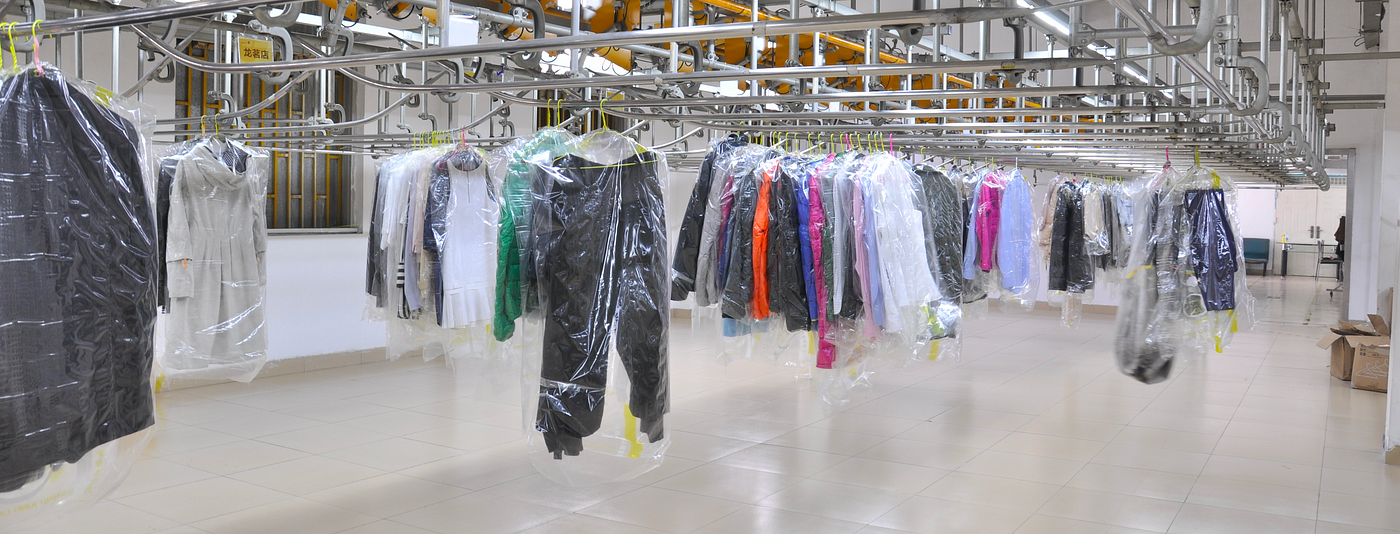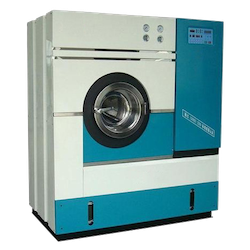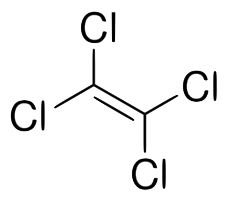How Much Is It To Dry Clean
Dry Cleaning

Dry Cleaning is a seemingly mysterious topic — in that location'due south a identify and yous accept clothes there and so you option upwards make clean clothes. But what is it, how does it piece of work, and why do some clothes require it?
Let'south start with the easiest to unpack, what is dry cleaning? It is cleaning, but it'southward not "dry", although it doesn't traditionally utilise h2o. Broadly speaking, dry cleaning would be meliorate described as "non hot cleaning", information technology encompasses a number of cleaning methods which don't involve either hot cleaning liquids or heating the apparel to dry them after washing.
Dry cleaners as a business are a combination of several related garment cleaning services — garment cleaning itself, alterations and repair, client-service, and often footwear cleaning. Although the trend is changing, nearly dry cleaning "locations" don't actually do the cleaning on-site, instead the garments are ingested and sent for cleaning, then held for pickup. In add-on to removing the demand to manage machines on-site, the constitute-based process means there's always a steady flow of garments for cleaning and with a larger pool of garments, more than specialized equipment tin be used instead of generalist machines.
The dry stores were pick upward and driblet off locations. Garments from these locations were picked up three times a day and taken back to the found for processing.
The iconic hanger snake dominating the retail presence isn't anything magical, it's only an efficient style to shop and remember a large number of garments, it excels over rolling garment racks when you lot consider the variability in drop-off time and pickup-time which would either go out half-empty racks or require continuous rearranging.

The dry out cleaning cycle shares most of the process with the mutual washer-dryer:
- Garments are soaked and agitated in a cleaning solution.
- The solution is either continuously filtered or drained and a rinse cycle uses clean liquid.
- The cleaning solution is mechanically removed from the garments.
- The cleaning solution is evaporated from the garments.
- The garments are removed from the equipment and, depending on the garment, hung, pressed, or folded.
At that place are two enormous differences between this process and traditional laundry though: the cleaning solution doesn't apply water and the washing and drying temperature is close to room temperature.

Unlike traditional laundry, which generally uses detergent dissolved in water, dry out cleaning uses an undissolved solvent: typically chlorine based like PERC, petroleum based such as Stoddart Solvent, or fifty-fifty super critical Carbon Dioxide. All of these are ameliorate at dissolving grease, oil marks, and other organic deposits which makes them more than effective cleaners for some stains, merely the real reason they're used is they all have significantly faster evaporation rates (higher vapor pressure) near room temperature, information technology's this belongings which makes dry cleaning "work".
The dry cleaning "launder" wheel occurs with room temperature solvents and, after a spin cycle, the air used for drying is but around threescore℃ (which is cooler than home dryers) and more than importantly only lasts a few minutes, which keeps the garments from becoming warm.
Keeping garments from getting warm while cleaning is, primarily, the reason for dry out cleanings being. The majority of dry clean but garments need special care because the fabric shrinks when heated, or worse, the garment is fabricated of multiple fabrics which shrink differently when heated. A smaller subset is garments which would dissolve (like glued on sequins) or discolour when heated.
Not every bit common, just the solvents used in dry cleaning can foreclose colour bleed — the colour either doesn't dissolve equally easily in the not-polar solvent or the dissolved color doesn't transfer dorsum from the solvent to other parts of the garment.
For some types of stains, the solvent cleaners are more effective at removing the stain, only for other types (similar the salts deposited from perspiration or deicing salt), hot water is a more than effective cleaner.
Separated from the mechanics of the cleaning process, the dry cleaners staff are professional garment cleaners and they tend to actually become through all the cleaning options — spot treating, steaming, vacuuming, etc before declaring a stain untreatable. Depending on the garment, they're also better at preparing the garment for washing (removing buttons, basting trim to go along it in place, etc).
If the tag says DRY-CLEAN ONLY, obey information technology. If it says DRY-Make clean, that means that is the recommended method, not the simply method.
Practise you need to actually go to the dry cleaners? It depends. If washing the garment in room temperature water and air drying gives yous the desired consequence, information technology's a perfectly valid method — for a very small number of fabrics which are irreparably changed by water absorption (like suede), solvent cleaning is the only pick.
Then if this all sounded simple, it's because the hardest part was glossed over. Dry cleaning as a concept is fairly simple — and it was simple in implementation until the late 20th century — but the complication comes from handling the cleaning solution. Unlike water and detergent, the fresh cleaning solution is expensive and in a limited supply, the used cleaning solution can't just be poured in the sanitary sewer, and the evaporated rinse tin't be vented to the temper.
Shipping and storing the solvent is complicated by hazardous chemical restrictions, the car needs dispensing equipment to pump the solvent into the launder bedroom, the used solvent is filtered and re-used instead of being disposed of, and the evaporated solvent is drawn over a circuitous cooling and filtering apparatus to condense the solvent before venting.
Source: https://medium.com/you-need-to-know-these-things/dry-cleaning-74540d60f441
Posted by: browntoosed.blogspot.com


0 Response to "How Much Is It To Dry Clean"
Post a Comment